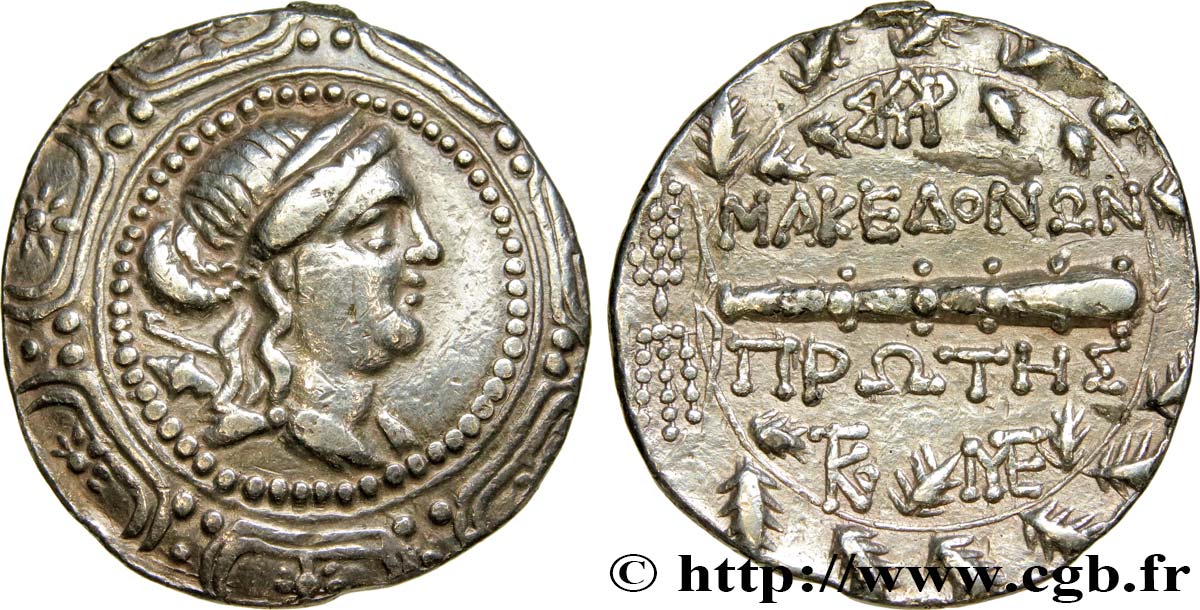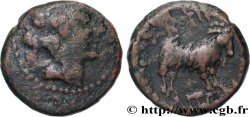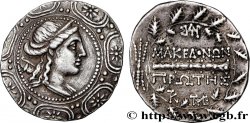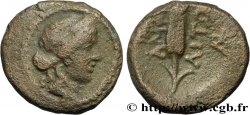Live auction - bgr_503639 - MACEDONIA - AMPHIPOLIS Tétradrachme stéphanophore
You must signin and be an approved bidder to bid, LOGIN TO BID. Accounts are subject to approval and the approval process takes place within 48 hours. Do not wait until the day a sale closes to register. Clicking on "BID" constitutes acceptance of the terms of use of cgb.fr private live auctions.
Bids must be placed in whole Euro amounts only. The sale will start closing at the time stated on the item description; any bids received at the site after the closing time will not be executed. Transmission times may vary and bids could be rejected if you wait until the last second. For further information check the Live auction FAQ
All winning bids are subject to a 18% buyer’s fee.
All winning bids are subject to a 18% buyer’s fee.
| Estimate : | 350 € |
| Price : | no bid |
| Maximum bid : | no bid |
| End of the sale : | 30 October 2018 14:07:30 |
Type : Tétradrachme stéphanophore
Date: c. 150 AC.
Mint name / Town : Amphipolis, Macédoine
Metal : silver
Diameter : 31 mm
Orientation dies : 12 h.
Weight : 16,83 g.
Rarity : R1
Coments on the condition:
Exemplaire sur un flan à l’usure régulière avec une trace de monture à 12 heures. Patine de collection
Catalogue references :
Predigree :
Cet exemplaire provient du stock d’ACR
Obverse
Obverse legend : ANÉPIGRAPHE.
Obverse description : Buste diadémé et drapé d'Artémis Tauropolos à droite, l'arc et le carquois sur l'épaule, placé au centre d'un bouclier macédonien orné d'étoiles.
Reverse
Reverse description : Légende de chaque côté d'une massue ; au-dessus, un monogramme.
Reverse legend : MAKEDONWN // PROTHS// (SAUHR)/ (TKo)/ (MTE)
Reverse translation : (Macédoine première).
Commentary
Les auteurs de l’AMNG avaient recensé seize exemplaires pour cette variété. Nous remarquons en particulier le petit monogramme TKp et un monogramme (MTE) référencé sous le numéro 15 conservé au Kunsthistorisches Museum de Vienne. Au droit, sur le bouclier macédonien, le buste d’Artémis est entouré d’une frise de sept motifs formés à partir d’une combinaison luni-solaire associant un double croissant de lune superposé et d’un astre solaire avec huit rais centré d’un globule. Lettres globuleuses. Trace de monture à 12 heures.
The authors of the AMNG had identified sixteen examples for this variety. We note in particular the small monogram TKp and a monogram (MTE) referenced under the number 15 preserved at the Kunsthistorisches Museum in Vienna. On the obverse, on the Macedonian shield, the bust of Artemis is surrounded by a frieze of seven motifs formed from a lunisolar combination associating a superimposed double crescent moon and a solar star with eight rays centered on a globule. Globular letters. Trace of mounting at 12 o'clock
The authors of the AMNG had identified sixteen examples for this variety. We note in particular the small monogram TKp and a monogram (MTE) referenced under the number 15 preserved at the Kunsthistorisches Museum in Vienna. On the obverse, on the Macedonian shield, the bust of Artemis is surrounded by a frieze of seven motifs formed from a lunisolar combination associating a superimposed double crescent moon and a solar star with eight rays centered on a globule. Globular letters. Trace of mounting at 12 o'clock








 Report a mistake
Report a mistake Print the page
Print the page Share my selection
Share my selection Ask a question
Ask a question Consign / sell
Consign / sell
 Full data
Full data









